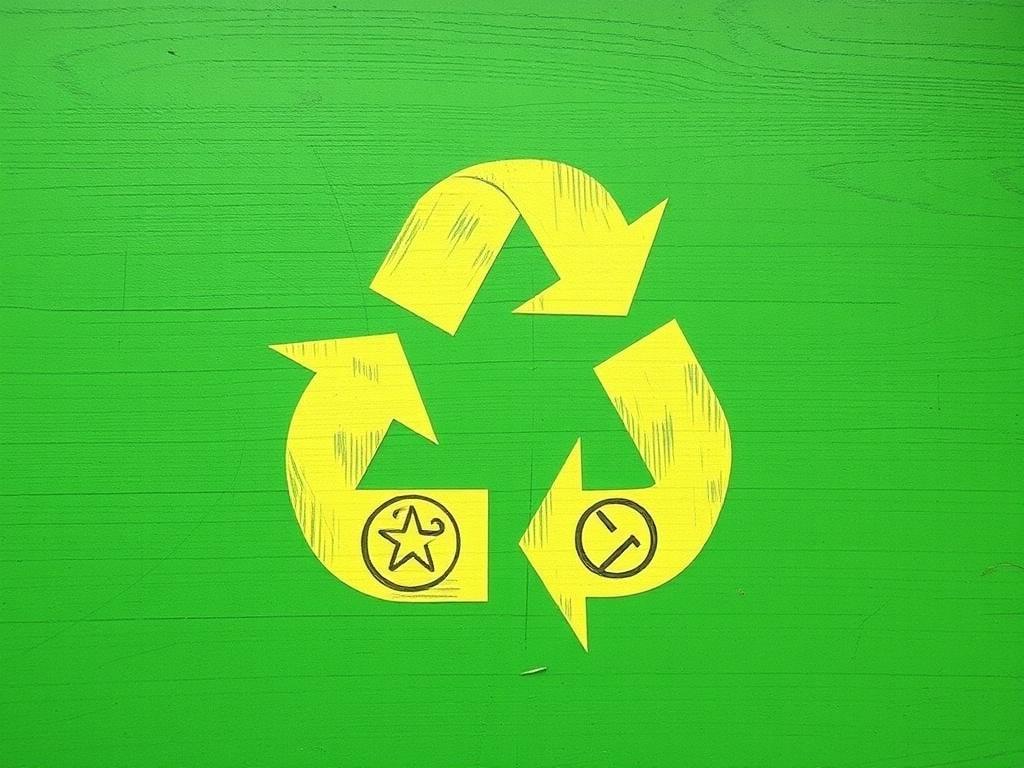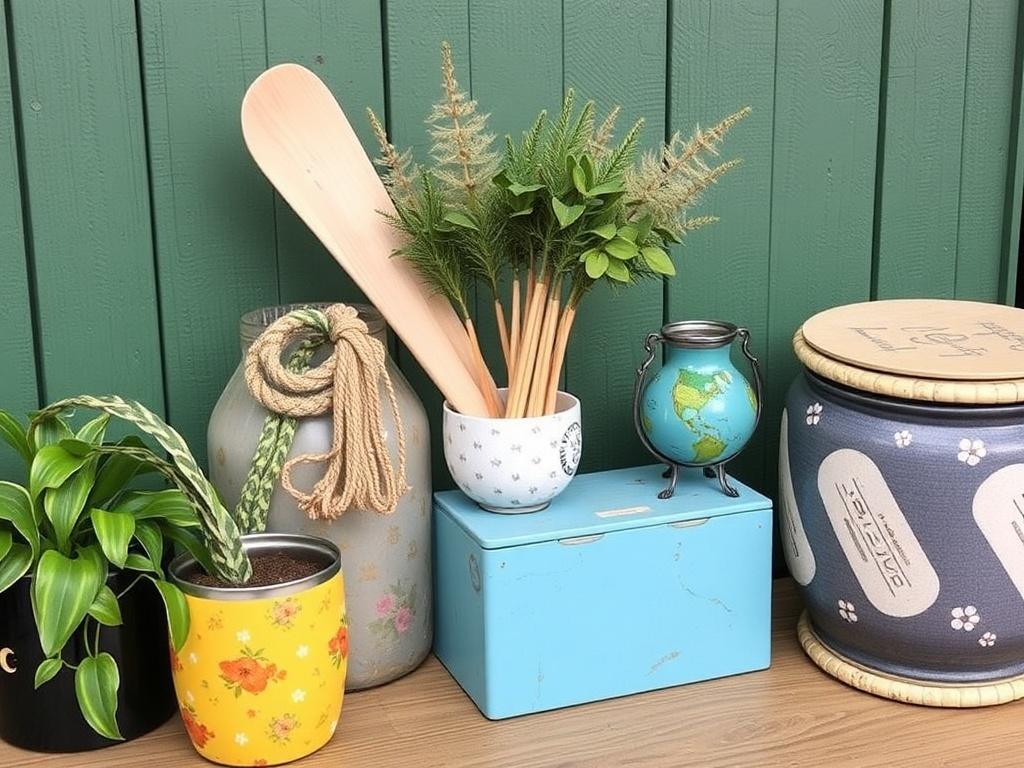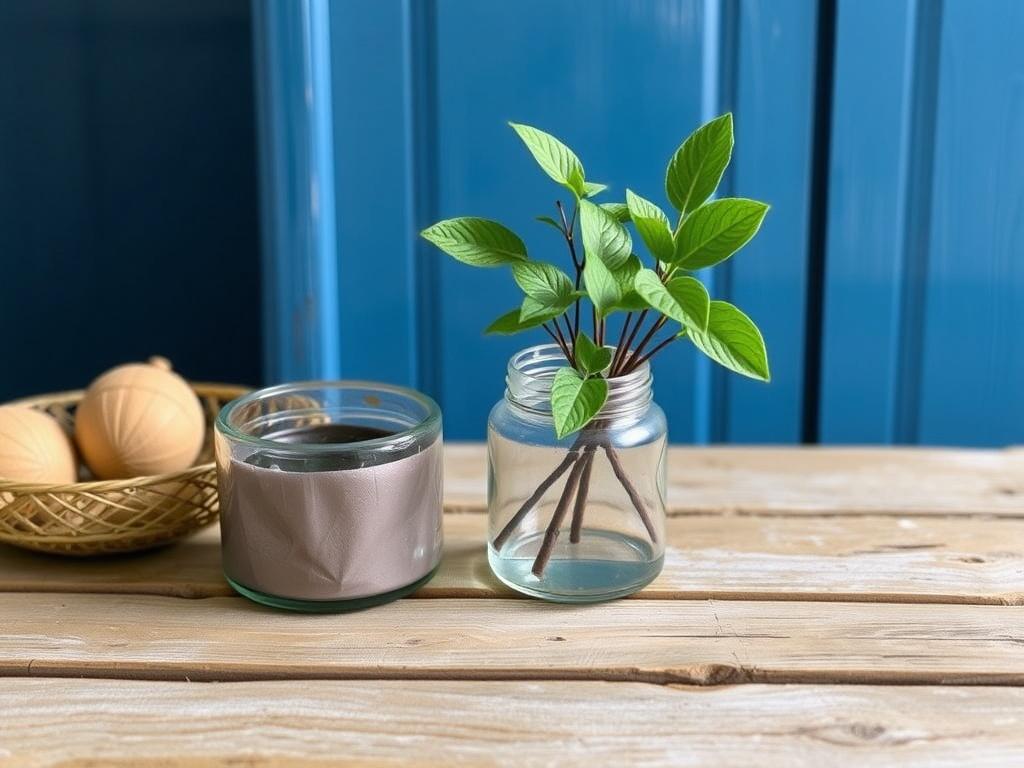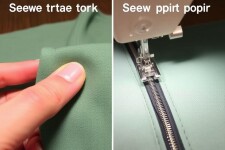Welcome. If you’ve ever stood in front of a pile of old things and wondered whether they were trash or treasure, you’re in the right place. This article explores in depth how we can recycle and upcycle to give objects a second life. We’ll unpack definitions, practical steps, creative projects, community ideas, environmental and economic benefits, safety considerations, and even how to set up a little side business or donate responsibly. Read at your own pace — the goal is to inspire, inform, and make the path to a more sustainable life approachable and fun.
Why this topic matters
We live in a world of abundance and, unfortunately, of waste. Every year, millions of tons of materials are discarded, often when a small amount of effort or imagination could turn them into something useful or beautiful. Recycling is essential, but upcycling adds an extra layer of creativity: instead of breaking things down into raw materials, we transform them into items with new purpose and value. The result is less waste, fewer raw materials consumed, and a happier planet — plus the satisfaction that comes from making something yourself or supporting local creators.
Throughout this article, we’ll use approachable language and a conversational tone so that whether you’re a curious beginner or someone with experience, you’ll find practical takeaways and ideas to apply right away. Note: no specific keyword list was provided to include in this piece; if you have particular phrases you want emphasized, tell me and I can revise the piece to weave them in naturally.
Understanding the basics
Before diving into projects and techniques, let’s make sure the bedrock ideas are clear. Recycling and upcycling are related but distinct approaches to reducing waste. Knowing the difference helps you decide when to reuse an object as-is, when to creatively transform it, and when to send it to a recycling facility so its materials can be recovered.
What is recycling?
Recycling involves collecting materials that would otherwise become waste and processing them into new raw materials. Glass, paper, cardboard, certain plastics, metals, and electronics can be recycled through municipal systems or specialized facilities. The process usually involves sorting, cleaning, shredding or melting, and reconstituting materials into new products. Recycling closes loops in material flows, lowers demand for virgin resources, and reduces energy use and emissions compared to extracting and refining new materials.
However, not everything is recyclable everywhere: local rules, contamination (food or mixed materials), and the type of material affect what can be processed. For example, some plastics are recyclable in one city but not in another. Recognizing the limits helps you avoid contaminating recycling streams, which can make recycling less effective.
What is upcycling?
Upcycling is the creative act of taking used objects and giving them a new, often higher-value purpose, without breaking them down to raw materials. Imagine turning a wooden pallet into a garden bench, old mason jars into pendant lights, or worn denim into a cozy patchwork bag. Upcycling emphasizes imagination, repair, and design, elevating discarded items into something functional, beautiful, or both. Because it typically avoids industrial processing, upcycling often uses less energy and fewer resources than full recycling.
Upcycling also has strong cultural and economic dimensions: it fosters craftsmanship, supports small-scale entrepreneurship, and encourages local exchange. For people who enjoy making things, upcycling is an expressive outlet and a way to personalize everyday objects.
Recycling vs Upcycling: A clear comparison
Both recycling and upcycling reduce waste, but they do so in different ways. Below is a simple table summarizing the major differences and complementary strengths of each approach.
| Aspect | Recycling | Upcycling |
|---|---|---|
| Process | Industrial or municipal processing to recover raw materials | Creative transformation of objects without fully breaking them down |
| Energy and resources | Generally requires energy to process and refine materials | Often low-tech, uses existing form and materials |
| Output | Raw inputs for manufacturing (e.g., recycled plastic pellets) | Finished or repurposed products (e.g., furniture, decor) |
| Scale | Large-scale systems needed | Can be small-scale, individual, or community-driven |
| Value | Variable; often low market value for raw recovered material | Can add significant subjective or market value |
Environmental and social benefits
When we recycle and upcycle, we don’t just prevent things from going to landfills — we also reduce environmental damage, conserve energy, and build stronger communities. Below are key benefits to keep in mind as motivations for adopting these practices.
Resource conservation
Materials like metals, glass, and paper come from finite resources or energy-intensive processes. By reusing and recycling, we reduce the demand for new extraction and manufacturing. For example, recycling aluminum saves a tremendous amount of energy compared to producing aluminum from bauxite ore. Upcycling repurposes the object itself, often bypassing the need for additional materials altogether.
Carbon footprint reduction
Manufacturing new products typically emits greenhouse gases. Recycling reduces the energy required for production and therefore lowers emissions. Upcycling often has an even smaller carbon footprint because it avoids industrial processing. A table below gives a rough sense of energy and emissions benefits for some common materials when recycled versus virgin production.
| Material | Primary production energy intensity | Recycling energy savings (approx.) | Upcycling potential |
|---|---|---|---|
| Aluminum | Very high | Up to 95% energy saved | Limited direct upcycling; often recycled then reformed |
| Glass | High (melting required) | About 20-30% energy saved | High for creative reuse (bottles, jars, decor) |
| Paper / Cardboard | Moderate | Up to 70% energy saved | Excellent for crafts, packaging reuse, art |
| Plastic | Variable by type | Variable; many plastics hard to recycle efficiently | Often high potential for repurposing (bottles -> planters) |
| Textiles | High for natural fibers and synthetics | Recycling complex; fiber-to-fiber recycling still developing | Excellent upcycling potential for clothing, quilts |
Community resilience and local economy
Small repair cafes, local upcycling workshops, and neighborhood swaps build social ties while reducing waste. Upcycling can support local artisans who create distinctive products — this keeps money circulating locally instead of going to mass-production factories. In many cities, community workshops provide tools and space for learning how to repair and transform items, turning sustainability into a social activity.
Cultural and personal value
Objects that are repaired or upcycled often carry stories. A table or lamp made from a family heirloom can be more meaningful than a mass-produced item. This emotional value helps people shift away from disposable mindsets and towards caring for possessions.
Getting started: practical steps for recycling
Recycling is often the most straightforward first step. Here are practical steps anyone can follow to make recycling more effective and less confusing.
1. Know local rules
Every city or town sets its own recycling rules. Common differences include which plastics are accepted, whether glass is sorted by color, and how to handle electronics or hazardous items. Check your municipal website or call your local waste management service to get a clear list of what goes where. Learning these rules prevents contamination, which can ruin entire batches of recyclables.
Tip: Keep a cheat sheet on your fridge listing items that are accepted and items to take to special drop-off points, like batteries and electronics.
2. Sort correctly
Sorting reduces contamination and makes recycling plants more efficient. Typical categories include paper/cardboard, glass, metal, and plastics (if accepted). Some places require separating food-soiled cardboard (like pizza boxes) from clean cardboard, while others accept mixed materials. Rinse containers to avoid food contamination and flatten cardboard to save space.
3. Avoid wishcycling
“Wishcycling” is the dangerous habit of putting something into recycling in the hope that it will be recyclable. When the wrong items are introduced — like greasy food containers, plastic bags, or electronics tossed into curbside bins — they can jam sorting machinery or lower the value of the recyclable stream. If unsure, look up the item or put it in the trash or specialized collection point.
4. Dispose of hazardous materials separately
Paint, solvents, batteries, medical waste, and electronics often require special handling. Municipalities conduct hazardous waste collection days or have permanent drop-off centers. Never pour paint down the drain or throw batteries into regular trash — they can release harmful substances into the environment.
5. Take advantage of special programs
Many stores and organizations run take-back programs: for example, battery recycling kiosks, electronics refurbishers, or textile donation bins. Major appliance stores often accept old appliances when delivering new ones. These programs keep materials out of landfills and sometimes ensure proper component recovery.
Getting started: practical steps for upcycling
Upcycling begins with creativity but is supported by a few practical habits. Whether you plan to upcycle occasionally or make it your new hobby, these steps will help.
1. Collect thoughtfully
Start a small “upcycle stash” — a box or shelf where you keep items with potential: jars, buttons, fabric scraps, an old lamp base, or broken furniture that has good bones. It’s easy to accumulate junk, so be selective: keep things that are sturdy and compatible with likely projects. For example, a solid wooden drawer can become a shelf; glass jars are perfect for storage and lighting projects.
2. Learn basic tools and safety
You don’t need a full workshop to upcycle, but basic tools extend what you can do: a good screwdriver set, measuring tape, sandpaper, a hot glue gun, and basic hand saws will take you far. For more advanced projects, learn to use drills, circular saws, and a sander safely. Always wear appropriate safety gear: gloves, goggles, and dust masks when cutting or sanding materials.
3. Start with simple projects
Begin with low-risk projects that build confidence. Mason jar organizers, tote bags from old t-shirts, and pillow covers from worn shirts are great beginners’ projects. As you gain skills, take on larger furniture transformations or mixed-material crafts.
4. Think modular and functional
Often the most successful upcycled items are both beautiful and useful. Prioritize function first: can a chest of drawers still hold things after it’s been repainted and had new handles added? Can an old ladder become a bookshelf? Functionality makes upcycled items more likely to be used and valued.
5. Share and learn from others
Join local maker groups, social media communities, or neighborhood workshops. Sharing ideas, patterns, and failures is invaluable. You’ll find inspiration and practical tips that save time and prevent mistakes.
Material-by-material upcycling ideas
Different materials lend themselves to different techniques. Below you’ll find a wide range of ideas organized by material. Each idea includes simple steps and variations so you can adapt to what you have on hand.
Textiles and Clothing
Textiles are powerful candidates for upcycling: they’re flexible, sturdy, and emotional (clothing often carries memories). Upcycling textiles can save natural fibers from landfill and reduce demand for new fabric production.
- T-shirts to tote bags: Cut off sleeves and sew a simple bottom. No sew? Use a heavy-duty fabric glue or knotting method to secure the base.
- Jeans into utility aprons or patches: Use sturdy denim for durable aprons or cut leg panels into pockets and patches to repair other clothing.
- Quilts from old shirts: Collect meaningful tees and combine them into quilt squares for a sentimental bed cover.
- Fabric bowl or rope coasters: Braid strips of fabric and sew them into coiled shapes for colorful coasters and bowls.
Key tips: Wash and sanitize donated or found textiles before working. When sewing, reinforce high-stress points with double stitching or interfacing for durability.
Wood
Wood can be repurposed in countless ways. Solid wood furniture pieces have intrinsic value due to their strength and aesthetic. Even damaged furniture often has “good bones.”
- Pallet to outdoor furniture: Sand, reinforce, and paint to make benches, planters, or small tables. Seal with outdoor varnish for longevity.
- Drawers into wall shelves: Remove the drawer front, sand, paint, and mount with brackets to create instant shelving with built-in storage compartments.
- Door into table top: An old door can become a dramatic desk or dining table. Cut to size, attach legs, and add edge trim if needed.
- Broken chairs into plant stands: Use the seat as a platform for a potted plant and hang or mount the backrest as a decorative element.
Safety tip: Inspect wood for rot or insect damage before using. Use appropriate treatments to prevent pests carrying into your home.
Glass and jars
Glass is durable and non-porous, making it excellent for reuse. Clean glass jars and bottles become storage, lighting, or decorative elements.
- Mason jar organizers: Screw jar lids under a shelf to hold jars for spices, screws, or craft supplies.
- Bottle pendant lights: Cut the bottoms off bottles or use whole jars with converted lamp kits for ambient lighting.
- Terrariums and planters: Use clear jars for small plants or herb gardens; add rocks for drainage and soil for planting.
- Glass mosaic art: Break clean glass into small pieces (with safety precautions) and embed into grout for colorful surfaces.
Important: When cutting glass, use a proper glass cutter and protective gear; otherwise prefer whole-joint transformations that avoid cutting.
Metals
Metals like aluminum and steel are highly recyclable and also upcyclable for decorative projects. Some metal items are better recycled than upcycled if they require complex reworking, but many home projects are within reach.
- Aluminum cans to planters: Cut and paint cans to make durable plant pots; punch holes for drainage.
- Old tools to hooks: Bend or cut old tools (a hammer or wrench) into coat hooks or handles.
- Scrap metal art: Welded scrap can become sculptures or garden ornaments — use a professional welder if you’re not trained.
Note: Metalwork can be dangerous — always use appropriate protective equipment and consult a professional for welding or cutting with power tools.
Plastics
Plastics are a complicated category. Because recycling systems differ by type, often the best upcycling practices are to reuse durable plastic items rather than rely on curbside recycling. However, some plastics can be transformed creatively.
- Plastic bottles to planters or seed starters: Cut bottles in half and use the bottom as a pot. The top can become a mini-greenhouse when inverted over seedlings.
- Crates into shelving: Stack plastic crates and secure them to create modular storage or shoe racks.
- Chop and fuse PET bottles for craft sheets: Some makers carefully heat PET bottles into flat sheets for creative projects; this requires careful temperature control and ventilation.
Caution: Melting plastics can release toxic fumes. Avoid techniques that require heating unless you have proper equipment and ventilation, or choose cold-join methods like gluing, sewing, or mechanical fastening.
Electronics and e-waste
Electronics contain valuable materials (metals, alloys) and hazardous components (batteries, heavy metals). Upcycling electronics is appealing and possible for some items, but often it’s safer and more effective to reuse and recycle through specialized programs.
- Refurbish old phones and laptops: Replace batteries, upgrade storage, and resell or donate through school programs or community workshops.
- Turn parts into art: Hard drive platters can become decorative discs, and old circuit boards can be used in jewelry or shadowboxes.
- Reuse components for DIY electronics: Salvage speakers, motors, and LEDs for hobby projects like Bluetooth speakers or light fixtures.
Important: Always properly remove and recycle batteries. Do not throw electronics into municipal bins. Use certified e-waste recyclers for safe material recovery.
Step-by-step upcycling projects (beginner to advanced)
Here are detailed projects across skill levels. Each project includes materials, steps, and tips so you can follow along or adapt as needed. Projects emphasize safety and creativity, and you’ll find many can be completed with affordable tools.
Project 1 — Mason jar pendant light (Beginner)
This project transforms a mason jar into a charming pendant light ideal for kitchens or reading nooks. It’s easy, affordable, and adds personality to a space.
Materials: mason jar with lid, pendant light kit (socket, cord), small drill with metal bit, E26/E27 bulb, decorative filling (sand, fairy lights) if desired.
Steps:
- Clean and dry the jar thoroughly.
- Drill a hole in the center of the jar lid large enough to feed the pendant cord through. Deburr the edges to avoid cutting the cord.
- Feed the cord through the hole, assemble the socket according to kit instructions, and secure it to the lid.
- Optionally add decorative elements inside the jar (sand, pebbles, faux moss) and screw on the lid.
- Install a bulb, hang the pendant from a secure ceiling anchor, and enjoy. If hardwiring, consult an electrician.
Tips: Use LED bulbs to minimize heat. If you prefer, use battery-powered fairy lights for a plug-free option.
Project 2 — T-shirt tote bag (Beginner)
A zero-sew tote made from an old t-shirt is a perfect starter project that requires no sewing and turns soft, worn shirts into useful bags.
Materials: old t-shirt, scissors, ruler.
Steps:
- Lay the shirt flat and cut off the sleeves to form the handle shape you like.
- Cut off the collar for a wider opening if desired.
- Measure and cut strips along the bottom of the shirt (about 1 to 1.5 inches wide). Tie corresponding front and back strips together in double knots to close the bottom.
- Trim excess and test the strength of your knots. Optionally, sew the bottom for extra durability.
Tips: Use thicker knit shirts for stronger bags. The method works well for grocery or beach bags.
Project 3 — Pallet coffee table (Intermediate)
Pallets are abundant and make excellent outdoor or indoor tables with a little sanding and joining.
Materials: two to three wooden pallets, sandpaper or power sander, screws, drill, wood stain or paint, casters or legs (optional), sealant.
Steps:
- Find pallets in good condition. Remove nails and inspect for structural integrity.
- Sand each pallet thoroughly to remove splinters and smooth the surface.
- Stack pallets to desired height and secure them with screws through the bottom. Add casters or attach legs if you want mobility or extra height.
- Stain or paint as you like and seal with an outdoor varnish if the table will live outdoors.
Tips: Use pallets rated for shipping (stamped HT for heat-treated) to avoid chemical-treated wood. If unsure, paint or seal the wood completely before using indoors.
Project 4 — Old ladder bookshelf (Intermediate)
An old wooden ladder can be repurposed into a rustic bookshelf or decorative display by stabilizing and mounting it horizontally or vertically.
Materials: wooden ladder, brackets or wall anchors, sandpaper, paint or stain, wood planks for shelves (optional).
Steps:
- Inspect the ladder for safety. Repair any loose rungs or joints.
- Decide on orientation: vertical ladder works as leaning shelf, while horizontal mounted ladder can hold books and decor.
- Sand and finish the ladder to match your decor. If adding planks for flat shelving, attach them across rungs with screws or brackets.
- Securely mount to wall anchors or use brackets to ensure the ladder won’t tip or fall.
Tips: For a safer bookshelf that holds heavy items, anchor to studs and use brackets rated for the expected weight.
Project 5 — Upholstered bench from an old drawer (Advanced)
Transform an old dresser drawer into a cozy bench with padding and fabric. This project is great for an entryway or bedroom nook.
Materials: large sturdy drawer, foam cushion, batting, upholstery fabric, staple gun, wood legs or casters, paint or stain.
Steps:
- Clean and reinforce the drawer base if needed. Sand and paint or stain the outer surface.
- Cut foam to the drawer dimensions and wrap with batting to soften edges. Cover with upholstery fabric.
- Attach the fabric-wrapped cushion to the drawer by stapling the fabric to the underside and trimming excess.
- Attach legs or casters to the bottom, ensuring they’re evenly spaced and secure.
Tips: Use high-density foam for durability. Pre-wash fabrics to avoid future shrinkage issues.
Community actions and group initiatives

Individual actions are powerful, but community initiatives multiply impact. Here are ways to organize or participate in collective recycling and upcycling efforts.
Swap meets and clothing exchanges
Organize a swap where neighbors bring gently used clothing, books, toys, and small household items. These events reduce waste and help people find new uses for preloved items. Add a small entry fee or donation option to support local charities.
Repair cafés and skill-sharing workshops
Repair cafés are gatherings where volunteers help others fix broken items — from appliances to clothing. These events democratize repair skills and keep items in circulation. Host a beginner-friendly session focusing on simple repairs like sewing buttons, fixing zippers, or small appliance troubleshooting.
Community upcycling hubs or makerspaces
Makerspaces with tools and workshop areas enable people to tackle larger upcycling projects. These hubs often offer classes, shared equipment, and mentorship. Start by partnering with a local community center, library, or school to open access to tools and workspaces.
Neighborhood collection days
Coordinate a local collection day for items that are difficult to recycle curbside — batteries, textiles, electronics. Bringing materials together can help ensure they’re taken to proper recycling facilities and may even attract a recycler willing to collect in bulk.
How to sell or donate upcycled goods

If your upcycling turns into objects you want to share — as gifts, to sell, or to donate — consider a few strategies to maximize their value and reach the right audience.
Present your work well
Photography goes a long way. Use natural light, simple backgrounds, and clear close-ups to showcase texture and craftsmanship. Tell the story behind the object — what it used to be, what you changed, and why it’s special. Buyers love origin stories and might pay more for items with meaning.
Know where to sell
Options include local craft markets, online marketplaces like Etsy (for handmade and vintage items), local community marketplaces, or social media groups. For bulk upcycled products, consider partnering with local shops or consignment stores. Each venue has fees and audience differences, so choose the one that best fits your product style and price point.
Price fairly
Consider materials, labor, overhead, and market demand. Upcycled items can fetch premium prices when they demonstrate clear craftsmanship and good story value, but avoid overpricing if the piece is purely functional. A simple pricing formula: materials cost + labor hours x hourly rate + small overhead markup.
Donate thoughtfully
If you prefer to donate, choose organizations that can accept the types of items you have — not all charities accept furniture or electronics. Communicate clearly about the condition of donated items; many organizations prefer items that are clean and functional. This ensures your donation helps rather than burdens the recipient.
Safety, health, and legal considerations
While upcycling and recycling are creative and beneficial, safety and legal considerations are important. Below are common pitfalls and how to avoid them.
Hazardous materials
Avoid repurposing items that may contain toxic substances without proper handling. Examples include fluorescent light tubes, certain paints, asbestos-containing materials in old homes, and items with lead-based paint. Consult professionals when removing or repurposing such materials and follow local hazardous waste disposal rules.
Product liability and resale
If you sell upcycled items, especially furniture or electrical goods, be aware of product safety standards in your country. For electrical items, ensure wiring complies with regulations and is inspected if necessary. Consider including disclaimers and clear care instructions for buyers. If making items for children (toys, nursery furniture), check safety norms thoroughly.
Health precautions
When working with textiles and furniture, mold or mildew can be a concern. Clean and dry items properly before repurposing. Wear respiratory protection when sanding old finishes to avoid inhaling lead or other toxic dust. Use gloves and eye protection with power tools.
Copyright and trademark issues
Be careful not to reproduce protected designs or brand logos for resale without permission. Upcycling branded clothing for private use is one thing; selling items that prominently display trademarked logos may create legal risks. When in doubt, alter designs sufficiently or remove logos.
Measuring and communicating impact
Knowing the difference your actions make helps motivate continued effort and can inform community programs. While precise measurement is complex, here are practical approaches to estimate and communicate the impact of recycling and upcycling.
Simple metrics to track
- Weight or count of items diverted from landfill per month.
- Estimated materials saved (e.g., number of glass bottles reused).
- Number of repair or swap events hosted and participants engaged.
- Money earned or donated via upcycled goods — useful for economic impact.
Qualitative benefits
Stories and testimonials about reduced waste, regained skills, or strengthened neighborhoods are powerful. Capture photos before and after, collect participant feedback at events, and track media mentions to build a narrative that resonates beyond raw numbers.
Carbon accounting (basic)
For simple carbon estimates, use conservative numbers: for instance, reusing a glass jar avoids the embodied emissions of a new jar plus transportation. For more precise accounting, consult life-cycle assessment (LCA) databases or online tools that estimate emissions per kilogram for different materials.
Common mistakes and how to avoid them
Even enthusiastic recyclers and upcyclers make mistakes. Here are common pitfalls and quick ways to avoid them.
Keeping everything “just in case”
It’s easy to accumulate stuff that may never be used. Be selective: if an item hasn’t been useful in two years, it likely won’t become useful. Donate or recycle items proactively to keep your space manageable.
Ignoring local recycling rules
Putting the wrong items in recycling streams can cause entire batches to be rejected. Take five minutes to learn local rules and post them on your rubbish area to remind everyone.
Overcomplicating projects
Starting with overly ambitious projects can lead to frustration. Begin simple, and scale complexity gradually as skills improve.
Neglecting safety
Accidents can happen. Invest in basic protective gear and learn safe tool use. For complex tasks like electrical work, enlist a qualified professional.
Institutional and policy levers that help
Individuals can do a lot, but systemic changes multiply effect. Here are policy directions and institutional practices that support recycling and upcycling on a larger scale.
Extended Producer Responsibility (EPR)
EPR policies require manufacturers to take responsibility for the full life cycle of their products, including end-of-life recovery. These policies create incentives for companies to design products that are easier to recycle or repair, and to fund collection and recycling programs.
Right-to-repair laws
Right-to-repair legislation ensures consumers and independent repair shops have access to parts, tools, and documentation necessary to fix products. These laws extend product lifespans and reduce premature disposal.
Investment in recycling infrastructure
Improved sorting facilities, more drop-off centers for hard-to-recycle items, and support for regional remanufacturing plants increase the capacity to reclaim materials and return them to supply chains.
Education and community grants
Local governments can fund repair cafes, makerspaces, and school programs that teach repair skills and creative reuse. Education fosters a culture that values longevity over disposability.
Business and entrepreneurial opportunities
There’s growing demand for sustainable, handcrafted, and story-driven products. Entrepreneurs can build businesses around upcycling in several ways.
Design-focused upcycling brands
Create a product line that showcases unique upcycled designs — for example, home decor made from reclaimed wood, or fashion made from vintage fabrics. Emphasize quality craftsmanship and storytelling to justify premium pricing.
Repair and restoration services
Offer repair services for furniture, clothing, or electronics. These businesses provide community value and recurring income, especially when paired with subscription or membership models for regular maintenance.
Workshops and classes
Teach upcycling techniques in community centers, online courses, or private classes. Workshops can be a revenue stream and a way to spread skills that reduce waste locally.
Materials brokerage and collection services
Businesses that collect, sort, and sell reclaimed materials to artists, builders, and manufacturers fill a growing market. A local reclamation hub can aggregate materials that individuals can’t handle alone.
Trends and the future of reuse
The future of recycling and upcycling looks creative and systemic. Here are trends shaping what’s next.
Circular design
Designers increasingly create products meant to be disassembled and remade. Modular furniture, easily replaceable components, and products designed with recyclable materials are gaining traction.
Digital platforms for reuse
Apps and online marketplaces that facilitate local exchange, repair appointments, or materials trading make reuse easier and more convenient. Expect more tech tools that help match items with the people who can best reuse them.
Advanced recycling technologies
Innovations like chemical recycling for complex plastics and improved textile recycling methods promise to expand the range of materials that can be recovered at scale. While promising, these technologies must be implemented responsibly and in tandem with reduction and reuse strategies.
Cultural shift toward valuing longevity
Consumer attitudes are slowly shifting from disposable convenience to appreciation of craftsmanship and durability. This cultural evolution supports secondhand markets, repair businesses, and artisan upcycling.
Resources: where to learn more and get supplies
Below are categories of resources and suggestions for finding tools, materials, and knowledge. Many are free or low-cost and can help you ramp up skills and projects.
Local resources
- Municipal waste management websites — for recycling rules and hazardous waste schedules.
- Community centers and libraries — many host repair cafes or makerspace programs.
- Local flea markets and salvage yards — great sources of reclaimed materials and inspiration.
- Neighborhood online groups — for free item pickups and swap announcements.
Online learning and inspiration
- DIY and craft websites with tutorials (search for upcycling + project type).
- Video platforms for step-by-step visual guides.
- Online marketplaces (Etsy, eBay) for buying and selling upcycled goods and for research on pricing and trends.
- Specialized recycling databases for material specifics and industrial resources.
Tools and supply sources
- Basic hand tool sets at hardware stores for beginners.
- Makerspaces or tool libraries for access to power tools and specialized equipment without owning them.
- Online retailers for smaller supplies (paint, fabric, hardware).
- Community reclamation centers for wood, metal, glass, and fixtures.
Stories that inspire
People worldwide have turned the impulse to fix and transform into meaningful lives, businesses, and community movements. Here are a few illustrative story ideas to inspire action:
The café that fixed a neighborhood
In one city, a group started a monthly repair café where people brought broken household items and clothing. Local volunteers — carpenters, seamstresses, and hobbyists — helped make repairs. The café became a social hub, reduced waste, and inspired attendees to start their own small repair businesses. Over a year, they reported diverting several tons of materials from landfill and fostering new local trades.
The designer who turned scraps into a brand
An independent designer began creating rugs and accessories from textile leftovers sourced from fashion factories. Their small business used modular weaving techniques to turn irregular scraps into high-quality products. By telling the story of each piece’s origin and emphasizing transparent production, the brand cultivated a niche market willing to pay for sustainable, handcrafted goods.
The school that teaches circular thinking
A primary school introduced a curriculum where students design and prototype upcycled products. Children learn basic crafts, presentation skills, and environmental science. The program culminates in a school market where families can purchase student-made items, instilling early appreciation for reuse and entrepreneurship.
Practical checklist: starting your own recycling and upcycling habit
Here’s a compact, practical checklist to convert inspiration into action. Print or save it and revisit as you make progress.
- Learn your local recycling rules — keep a visible cheat sheet.
- Set up sorting bins at home for recyclables and donation items.
- Create an “upcycle stash” but be selective — limit to a manageable container.
- Assemble a basic toolkit (screwdrivers, tape measure, hot glue gun, scissors).
- Take one small upcycling project in the next 30 days (e.g., T-shirt tote).
- Attend a repair cafe or workshop to learn and meet others.
- Host or join a swap meet in your neighborhood within 3 months.
- For sellers: document projects with good photos and clear descriptions.
- For donors: confirm local charities accept the items you plan to give.
- Track what you divert from landfill each month — even a rough estimate builds habit.
Final thoughts — Why your small actions matter

Changing the way we treat objects — from throwaway consumer goods to potential materials for new use — is a cultural shift as much as a technical one. Every jar you reuse, every chair you repair, and every swap meet you attend is a vote for a world where resources are respected and creativity is valued. The collective action of individuals, communities, designers, and policymakers together forms the momentum for a circular future.
If you leave this article with one practical idea, let it be this: start small, keep it joyful, and share what you learn. Upcycling and recycling are not just about saving resources — they’re about reconnecting to the things we own, the people around us, and the craft of making. The second life you give to an object can ripple outward, inspiring others and contributing to real environmental change.
Want a tailored plan or project list?
If you’d like, I can help you create a personalized plan: suggest upcycling projects based on items you already own, outline a beginner tool list tailored to your space and budget, or draft an event plan for a neighborhood swap or repair café. Tell me what materials you have or what you’d like to learn, and we’ll design steps to get you started.
Closing note on keyword phrases
As mentioned earlier, no specific keyword phrases were provided in your request. If you have a set of keywords you want woven through the article — for SEO, outreach, or educational goals — send them and I will revise the text to integrate those phrases naturally and evenly across sections.
Thank you for reading. Let’s keep making, fixing, and reimagining — one second life at a time.



